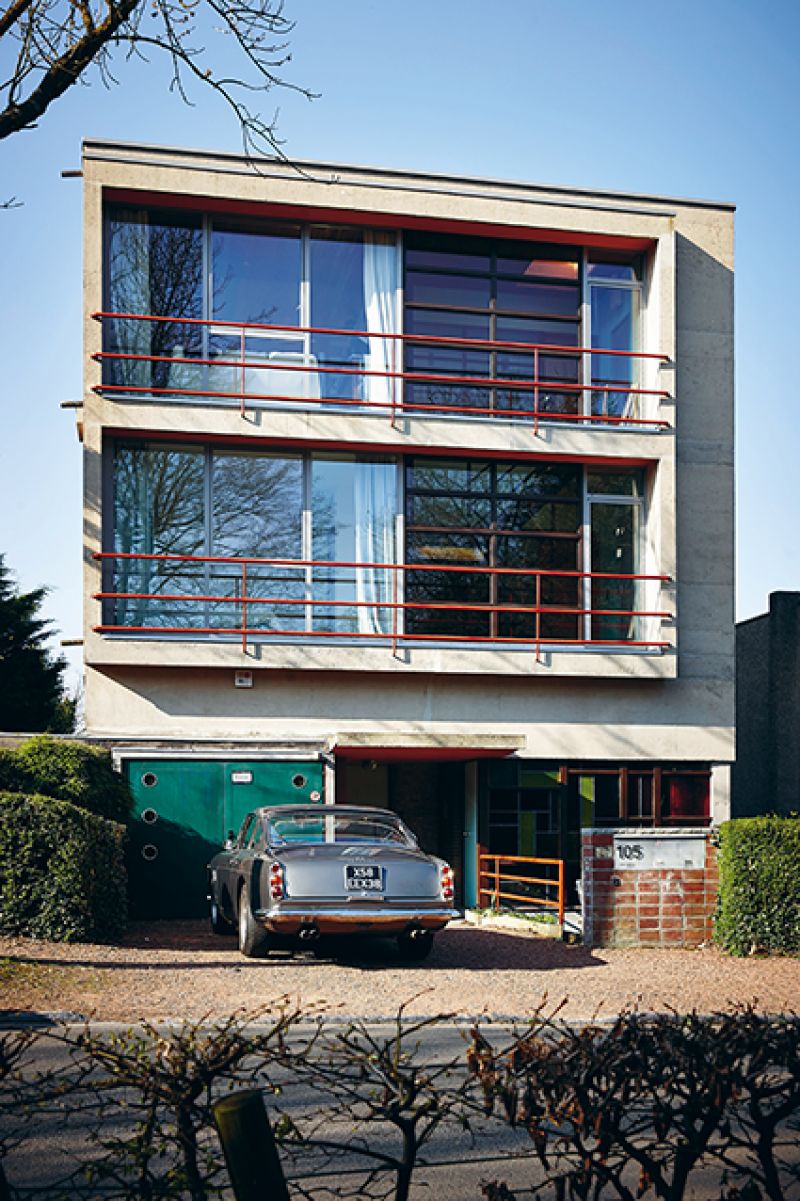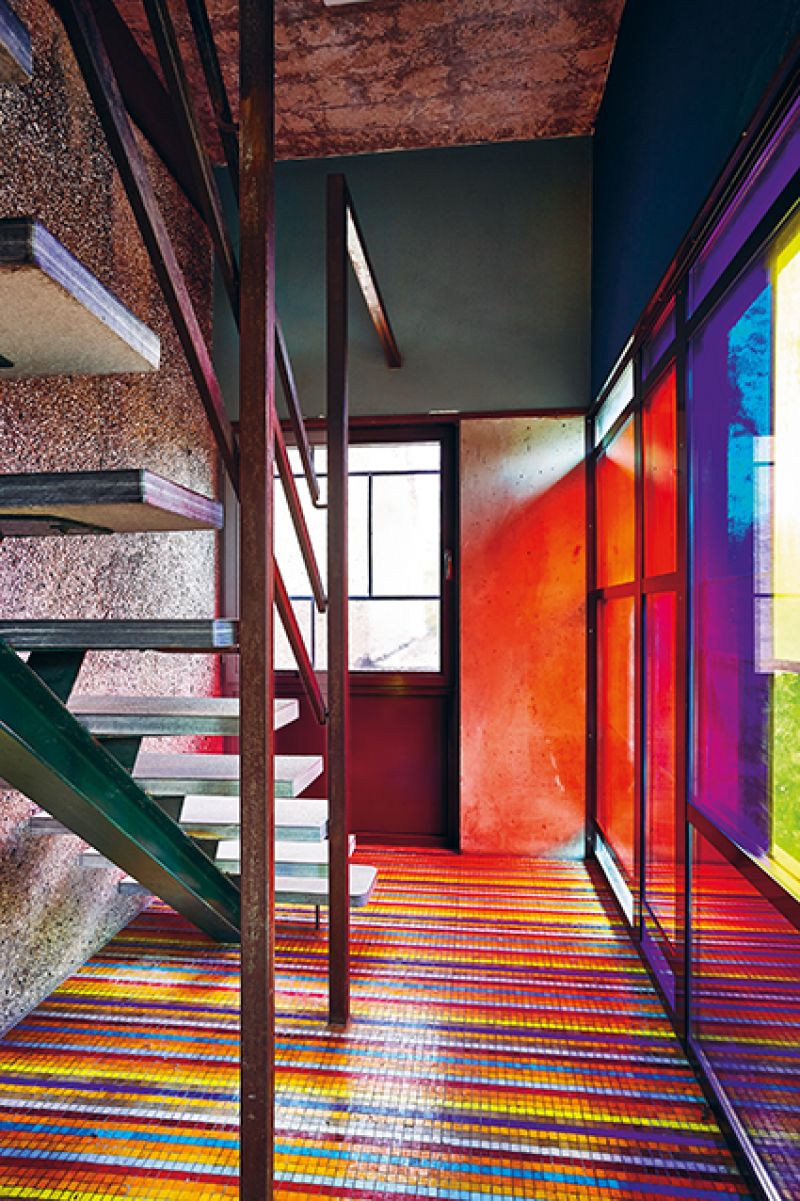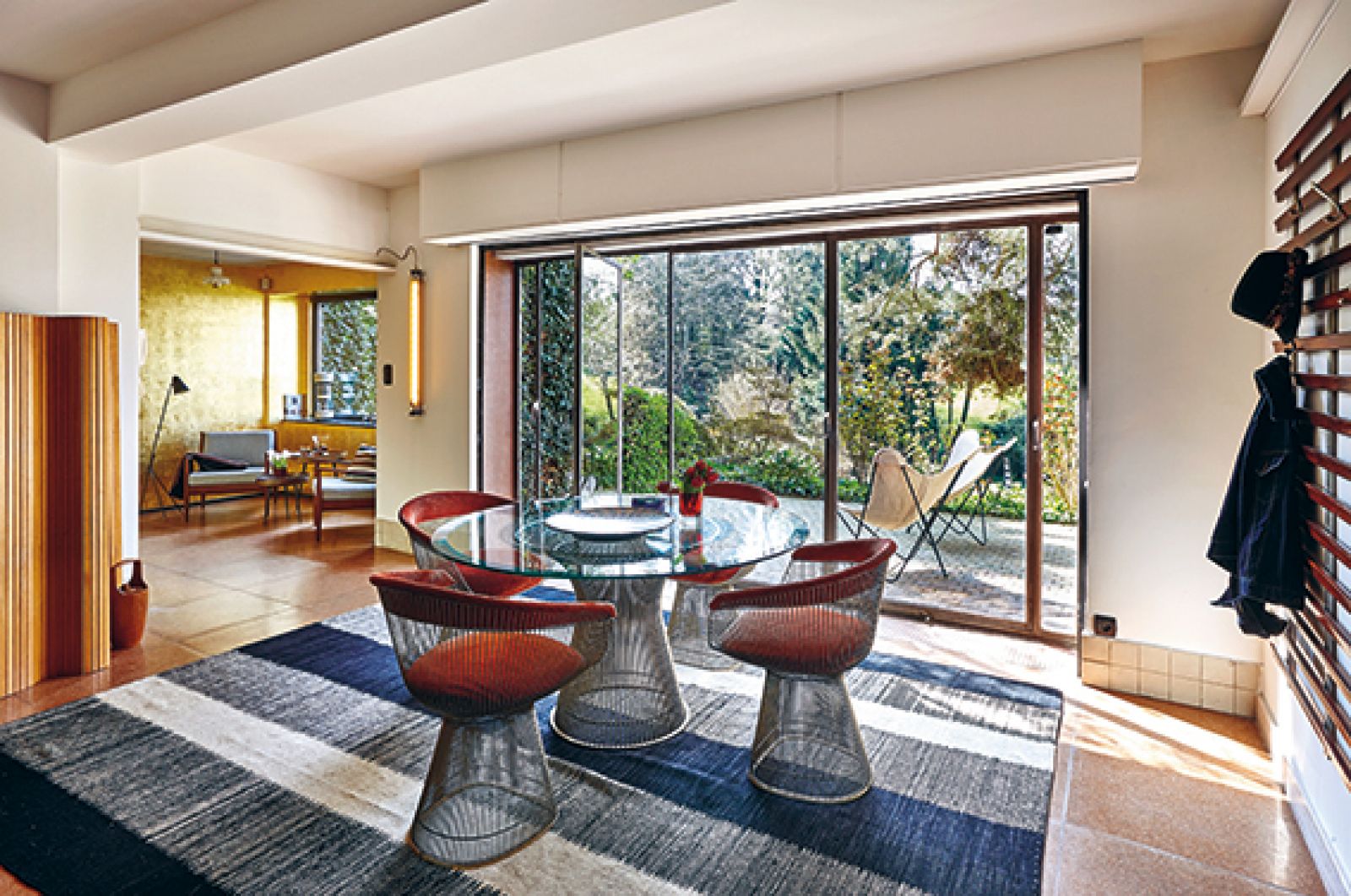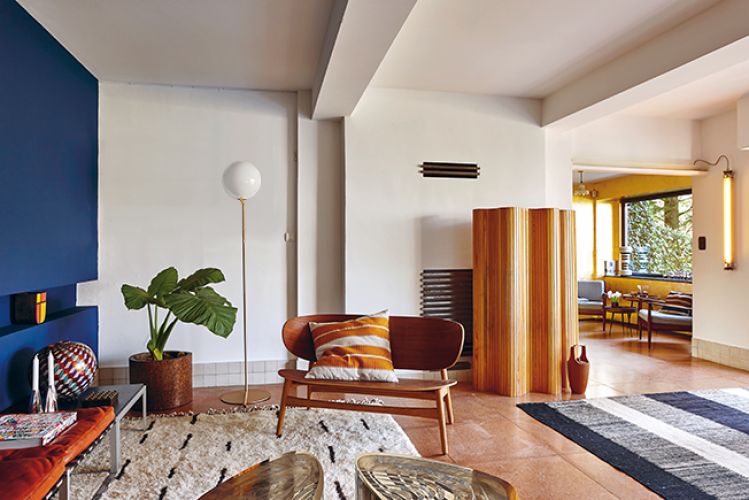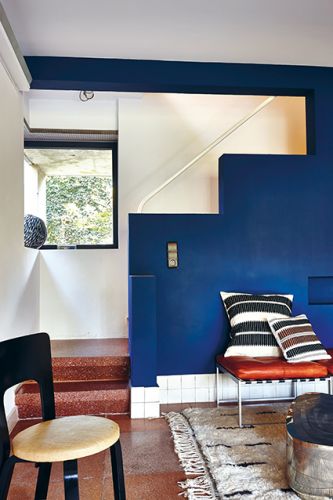Most iconic monuments are closed off to visitors. Until recently, this also applied to the 1923 house on the outskirts of Brussels, which was turned into a comfortable pied-à-terre by its new owner, Caroline Notté. With exquisite taste, Notté – who is an architect and photographer – nudged the style of this modernist building towards a successful contemporary revaluation.
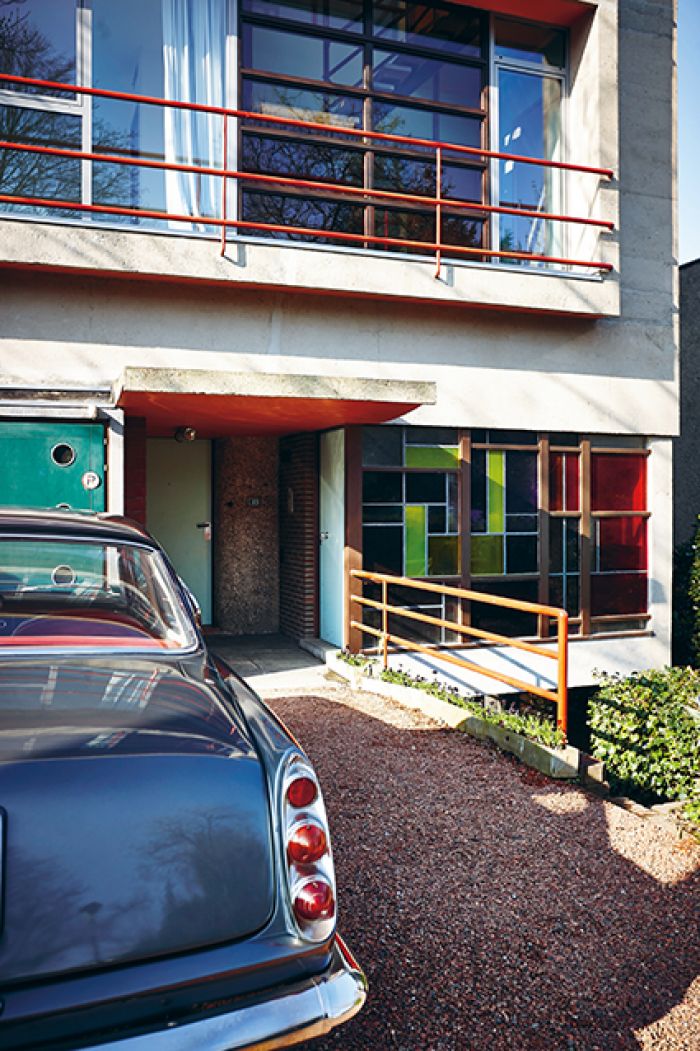
Boogie Woogie
Architect Louis Herman De Koninck’s house is a milestone of modernism in Belgium. With a female touch, Caroline Notté turned it into a perfect pied-à-terre.
L \ The mosaic flooring in the entrance hall on the ground floor immediately commands all the attention and mirrors the glass colours of the spectacular windows in the façade. R \ This special house is an icon of modernist architecture. The Brussels avant-garde architect Louis Herman De Koninck built the ground floor in 1923 in a purely functional style that leans towards the logic of De Stijl. Mondrian’s and Van Doesburg’s imagery is very recognizable in the glass windows and mosaic floors. In the late 1960s, De Koninck built another two floors on top of the existing bungalow. This original building was almost perfectly preserved, including all the details and light elements.
It started out being a very compact house. The design stems from the early 1920s. Young architect Louis Herman De Koninck (1896-1984) found the perfect lot to build a small bungalow, on a hill in Uccle, a municipality in the green region of Brussels. Only 27 years old, De Koninck was captivated by modernism and was looking for logic and simplicity in construction. The stained-glass windows along the entrance show the fondness for De Stijl’s imagery: the primary colours and elementary compositions that Theo van Doesburg, Piet Mondrian and Gerrit Rietveld developed in their work. De Koninck also had a great appreciation for Henry van de Velde, who built the Kröller-Müller Museum in the Veluwe in the Netherlands and who started an art school in Weimar, Germany, which would later result in the Bauhaus. The house in Uccle shows a mixture of fascinations and also his love of French modernists such as Le Corbusier, Chareau and Mallet-Stevens who rejected unnecessary frills and promoted a clean, professional building style for the new age. Louis Herman De Koninck wanted a bright house, in which he could enjoy the light and nature and he was able to do that for most of his life. Until 1968, he lived in the lower part of the house. In the late 1960s, he added two new floors in the same modernist style. ‘The oldest part, the two lower levels, has been perfectly preserved,’ Caroline Notté explains. She enjoys this fantastic country house every day. ‘This house is one of the first modernist houses in Belgium and therefore an attraction for architects.’ Louis Herman De Koninck is not only known for his own house but is also famous for the design of the modular Cubex kitchen, which was a standard in the 1950s in the post-war reconstruction areas on the outskirts of the Belgian cities.
At the rear, the occupant established an open living space with a vintage table and chairs by Warren Platner. All the construction elements, such as the stone-red terrazzo floor, has been well preserved in its original state. The space is almost a hundred years old but feels very contemporary. The Kilim rug comes from Michel Antoine’s collection, wall lamp Elgar Copper is by Sammode. From the dining area you can see far into the large garden.
The Human Form
‘This design was definitely revolutionary back in 1923. Most houses had a stereotypical “classic” look and had a fixed layout, based on a central axis with rooms on either side. This house, however, you enter on the first floor and then go down the narrow stairs to the living room which lies towards the garden. Right away it gives off a holiday vibe!’ De Koninck had his bedroom and workspace upstairs. The finish was clean and modern with a lot of mosaic and terrazzo tiles on the floor. The banister is a simple metal tube. He installed wide windows with metal frames everywhere. Of course the original furniture was not preserved, but most of the fixtures were, such as some shelves.
It’s magical how everything remained almost untouched and the entire structure captures the imagination. People think of monumentality when they think of modern architecture but when you live here, you really feel what Le Corbusier meant with his Modulor, which he used for designing houses according to the human form.’
Louis Herman De Koninck designed this house in three stages. The ground floor was built in 1923 and the top two floors were added in the late 1960s.
The most intimate corner of the living room is cordoned off by a vintage room divider by Alvar Aalto and a bench by Hans Wegner. Side tables by Armand Jonckers in the foreground.
Le Corbusier Blue
The location is perfectly suitable for a pied-à-terre in the countryside. Caroline Notté had the walls of the seating area painted blue: ‘A typical Corbusier colour.’ Another wall, towards the garden, is coated with gold leaf to intensify the light. Notté doesn’t like clinically clean interiors and that’s why she surrounds herself with a lot of art, pictures and fabrics. This soft ‘feminine’ touch contrasts very well with the original design’s rectilinear architecture. ‘I don’t think the house used to be inhabited like this, but it works perfectly for me. The structure challenges me, it’s a special and inspiring place that lets you travel around inside your own house. You can imagine yourself here in Belgium, as well as – especially in the fairly wild garden – somewhere in Brazil.’
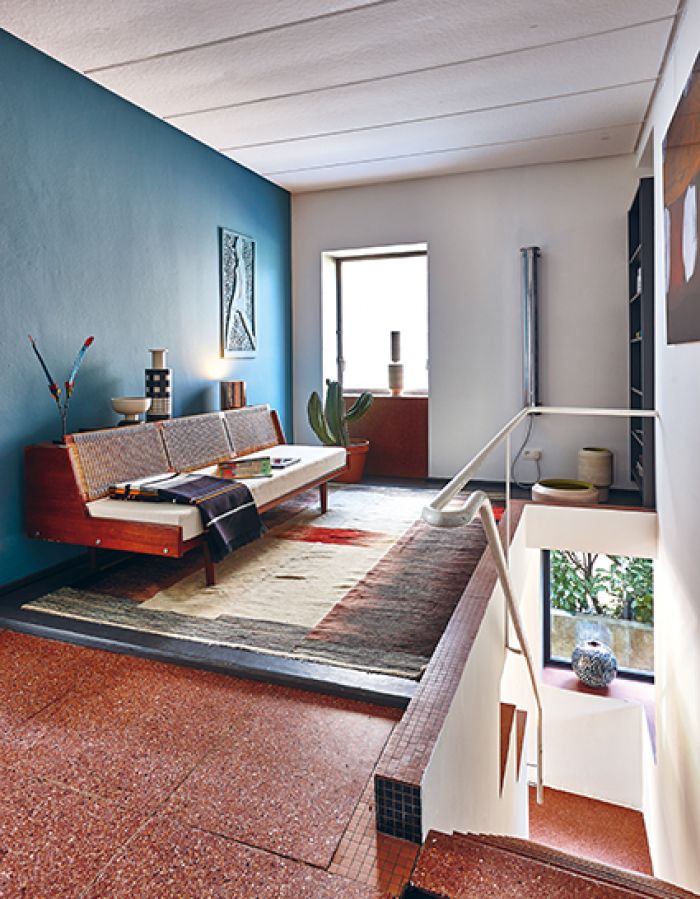
The original entrance from the 1920s with on the right a relief, allegedly depicting the architect’s wife. Behind Wegner’s original sofa bed are vases by Ettore Sottsass and a little lamp by Jean-François D’Or. The vase in the window sill is by Arik Levy. The carpets are from Michel Antoine’s collection.
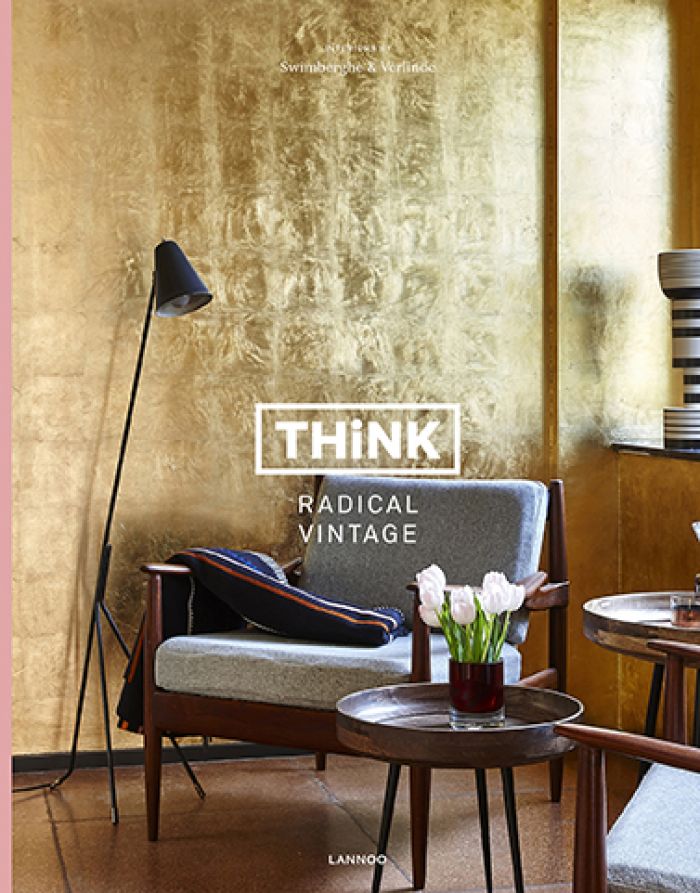
Think Radical
Vintage This production comes from the book Think Radical Vintage, the most recent issue of the successful Think series by Swimberghe & Verlinde. Think Radical Vintage shows a lot of spectacular interiors and iconic vintage classics, among which the house and newsrooms of the WOTH founders!
Think Radical Vintage, published by Lannoo, can be ordered for € 39.95 through
This production was published in WOTH No9. This issue is still available in english via Bruil & van der Staaij. Or get a subscription here!
Dutch versions of WOTH can be ordered in our shop and an NL subscription is available here.
